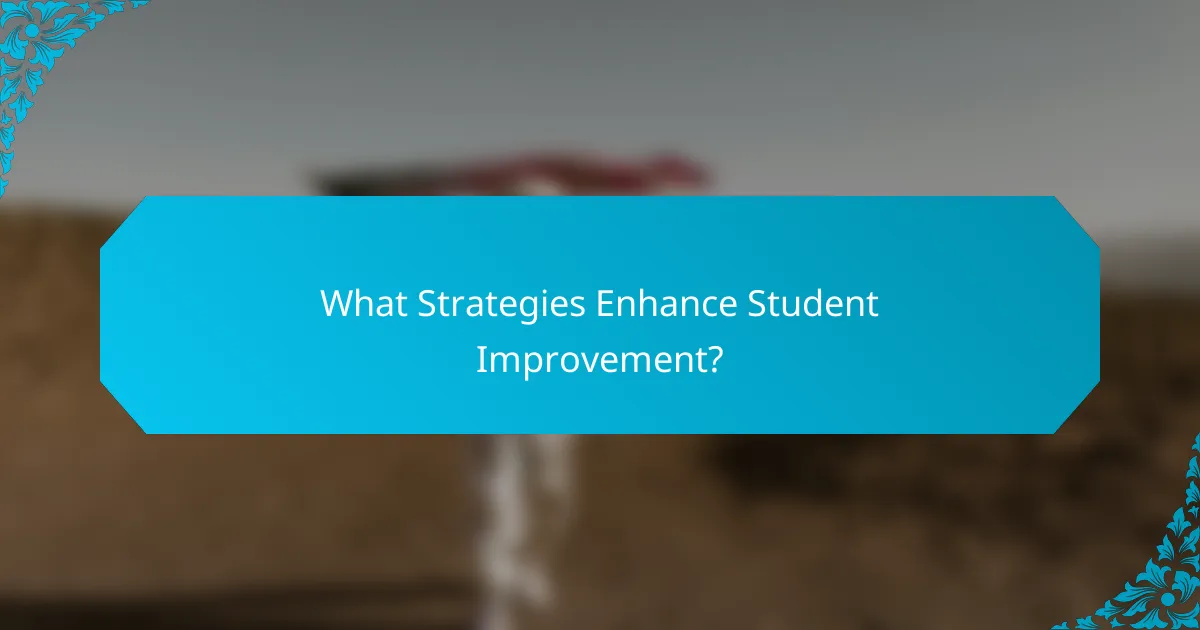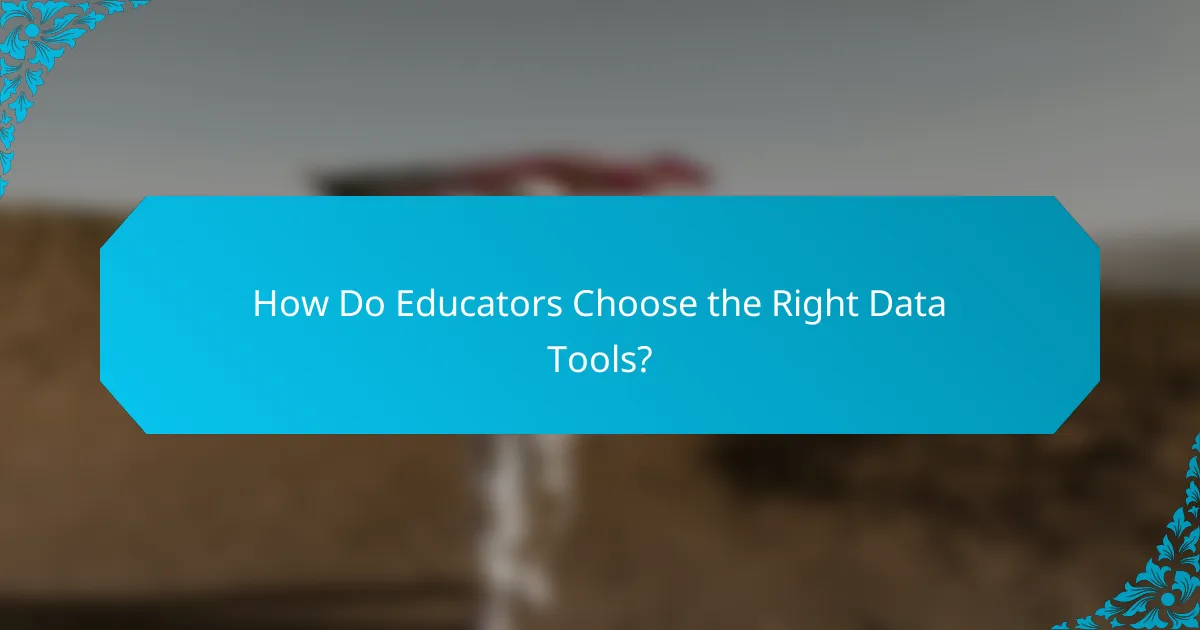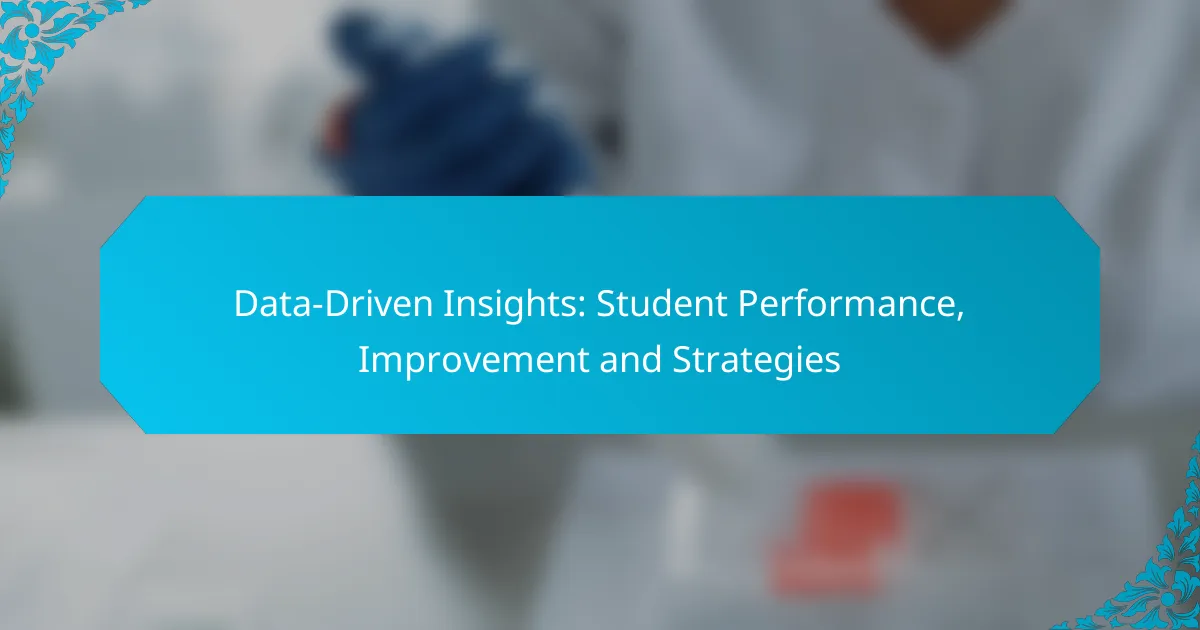Data-driven insights play a crucial role in enhancing student performance by pinpointing individual learning needs and customizing educational strategies. By leveraging various data points, educators can adopt targeted approaches that promote engagement and foster significant academic improvement.

How Can Data-Driven Insights Improve Student Performance?
Data-driven insights can significantly enhance student performance by identifying individual learning needs and tailoring educational strategies accordingly. By analyzing various data points, educators can implement targeted approaches that foster improvement and engagement.
Personalized Learning Plans
Personalized learning plans are tailored educational strategies designed to meet the unique needs of each student. These plans often incorporate data from assessments, learning styles, and interests to create a customized curriculum. For example, a student struggling with math may receive additional resources and exercises focused on foundational concepts.
To implement personalized learning plans effectively, educators should regularly review student progress and adjust the plans as necessary. This iterative process ensures that the learning experience remains relevant and effective.
Targeted Interventions
Targeted interventions involve specific strategies aimed at addressing identified weaknesses in student performance. By utilizing data analytics, educators can pinpoint areas where students are falling behind and implement focused support measures. For instance, if data shows that a group of students is underperforming in reading, targeted interventions could include small group tutoring sessions or specialized reading programs.
It’s crucial to monitor the effectiveness of these interventions through ongoing assessments to ensure they are yielding positive results. Adjustments should be made based on data feedback to maximize student improvement.
Real-Time Feedback Mechanisms
Real-time feedback mechanisms provide immediate insights into student performance, allowing for quick adjustments in teaching methods. Tools such as online quizzes and interactive platforms enable educators to gauge understanding as lessons progress. For example, a teacher can use instant polling during a class to assess comprehension and adapt their instruction on the spot.
Implementing real-time feedback can enhance student engagement and motivation, as learners receive timely information about their progress. This approach fosters a more dynamic learning environment where students feel supported in their educational journey.
Data Analytics Tools
Data analytics tools are essential for collecting and interpreting student performance data. These tools can range from simple spreadsheets to sophisticated software that analyzes trends and patterns in learning outcomes. Educators can use these insights to identify strengths and weaknesses across different student demographics.
When selecting data analytics tools, consider user-friendliness and integration capabilities with existing systems. Effective tools should allow for easy visualization of data, making it accessible for educators to make informed decisions.
Teacher Training Programs
Teacher training programs focused on data literacy equip educators with the skills needed to analyze and interpret student performance data effectively. These programs should cover data collection methods, analysis techniques, and how to apply insights to improve teaching strategies. For instance, training might include workshops on using specific data analytics software or interpreting standardized test results.
Ongoing professional development is vital, as it ensures that teachers remain updated on best practices in data utilization. Schools should encourage a culture of data-driven decision-making to enhance overall educational outcomes.

What Strategies Enhance Student Improvement?
Effective strategies to enhance student improvement focus on engagement, collaboration, and consistent feedback. Implementing these approaches can lead to significant gains in academic performance and overall learning experiences.
Collaborative Learning Environments
Collaborative learning environments foster teamwork and communication among students, which can enhance understanding and retention of material. By working together, students can share diverse perspectives and tackle complex problems more effectively.
To create a successful collaborative environment, consider using group projects, peer tutoring, or study groups. These methods encourage active participation and can help students develop critical social skills while reinforcing academic content.
Gamification Techniques
Gamification techniques incorporate game elements into learning to increase motivation and engagement. By using points, badges, or leaderboards, educators can create a fun and competitive atmosphere that encourages students to strive for improvement.
For instance, implementing a point system for completing assignments or participating in class discussions can motivate students to engage more fully. However, ensure that the focus remains on learning rather than merely winning rewards.
Regular Assessments and Adjustments
Regular assessments and adjustments are crucial for tracking student progress and identifying areas needing improvement. Frequent quizzes, feedback sessions, and performance reviews help educators tailor their teaching methods to better meet students’ needs.
Consider using formative assessments, which provide ongoing feedback rather than just evaluating final outcomes. This approach allows for timely interventions and adjustments to teaching strategies, ultimately leading to enhanced student performance.
Parental Involvement Initiatives
Parental involvement initiatives play a significant role in student improvement by fostering a supportive home environment. Engaging parents in their children’s education can lead to better academic outcomes and increased motivation.
Schools can implement workshops, regular communication, and volunteer opportunities to encourage parental participation. By creating a partnership between educators and families, students are more likely to succeed academically and socially.

Which Tools Are Effective for Analyzing Student Data?
Effective tools for analyzing student data include platforms that provide insights into performance trends, engagement metrics, and areas for improvement. Utilizing these tools can help educators tailor their teaching strategies and enhance student outcomes.
Google Classroom Analytics
Google Classroom offers built-in analytics that track student engagement and assignment completion. Educators can view metrics such as the number of assignments submitted, grades, and participation rates, which help in identifying students who may need additional support.
To make the most of Google Classroom Analytics, regularly review the data to spot trends over time. For instance, if a significant number of students struggle with a particular assignment, it may indicate a need for instructional adjustments or additional resources.
Tableau for Education
Tableau for Education provides powerful data visualization tools that allow educators to create interactive dashboards from student data. This platform can integrate various data sources, enabling a comprehensive view of performance metrics across different subjects and demographics.
When using Tableau, focus on key performance indicators (KPIs) relevant to your educational goals. For example, visualizing student progress over time can help identify effective teaching methods and areas needing improvement. Consider training sessions to maximize the platform’s potential.
Learning Management Systems (LMS)
Learning Management Systems (LMS) like Canvas or Moodle often include analytics features that track student progress, engagement, and course completion rates. These systems can generate reports that highlight which resources are most effective and where students are struggling.
To leverage an LMS effectively, ensure that the analytics features are utilized regularly. Set benchmarks for student performance and use the data to inform instructional strategies. Avoid relying solely on grades; consider engagement metrics as well to get a fuller picture of student success.

What Metrics Should Be Used to Measure Student Success?
To effectively measure student success, it is essential to focus on metrics that provide a comprehensive view of academic performance and engagement. Key metrics include standardized test scores, classroom engagement levels, and attendance rates, each offering unique insights into a student’s educational experience.
Standardized Test Scores
Standardized test scores are a widely recognized metric for assessing student performance across various subjects. These scores provide a benchmark for comparing students’ knowledge and skills against national or state standards.
When analyzing standardized test scores, consider the context, such as the specific test used and the demographic factors influencing results. For example, a score in the 70th percentile indicates a student performed better than 70% of peers, highlighting areas of strength and potential improvement.
However, relying solely on these scores can be misleading. It’s important to complement them with qualitative assessments, such as teacher evaluations, to gain a fuller picture of a student’s capabilities.
Classroom Engagement Levels
Classroom engagement levels reflect how actively students participate in their learning environment. High engagement often correlates with better academic outcomes, making it a vital metric for success.
To measure engagement, educators can observe behaviors such as participation in discussions, collaboration with peers, and completion of assignments. Tools like surveys or classroom observations can help quantify engagement levels.
Encouraging a supportive classroom atmosphere can enhance engagement. Strategies include incorporating interactive activities, providing choices in assignments, and fostering a sense of community among students.
Attendance Rates
Attendance rates are a fundamental indicator of student success, as consistent attendance is linked to better academic performance. High attendance rates typically suggest that students are committed to their education and less likely to fall behind.
Monitoring attendance involves tracking the number of days a student is present versus absent. A general benchmark is that students should aim for at least 90% attendance to stay on track with their studies.
Addressing barriers to attendance is crucial. Schools can implement initiatives such as mentorship programs or family outreach to support students facing challenges that affect their ability to attend regularly.

How Do Educators Choose the Right Data Tools?
Educators select data tools based on their ability to enhance student performance and facilitate improvement strategies. Key considerations include the tool’s features, ease of use, integration capabilities, and the specific needs of their students.
Assessing Educational Needs
Understanding the specific educational needs of students is crucial when choosing data tools. Educators should evaluate what data is necessary to track progress, identify gaps, and tailor instruction effectively. This assessment can involve surveys, focus groups, or discussions with students and parents.
Evaluating Tool Features
When evaluating data tools, educators should focus on features that support data visualization, reporting, and analysis. Tools should allow for easy tracking of student performance metrics, such as grades, attendance, and engagement levels. Additionally, features like customizable dashboards can help educators quickly access relevant information.
Integration with Existing Systems
Choosing data tools that integrate seamlessly with existing educational systems is essential for efficiency. Educators should consider tools that can connect with learning management systems (LMS) and student information systems (SIS). This integration minimizes data entry duplication and ensures that all information is centralized and easily accessible.
Cost and Budget Considerations
Budget constraints often influence the selection of data tools. Educators should compare costs, including subscription fees, training expenses, and potential hidden costs. Many tools offer tiered pricing models, so it’s beneficial to assess which features are necessary and which can be foregone to stay within budget.
Training and Support
Effective implementation of data tools requires adequate training and ongoing support. Educators should seek tools that provide comprehensive training resources, such as tutorials and user guides. Additionally, responsive customer support can help resolve issues quickly, ensuring that educators can maximize the tool’s potential.
